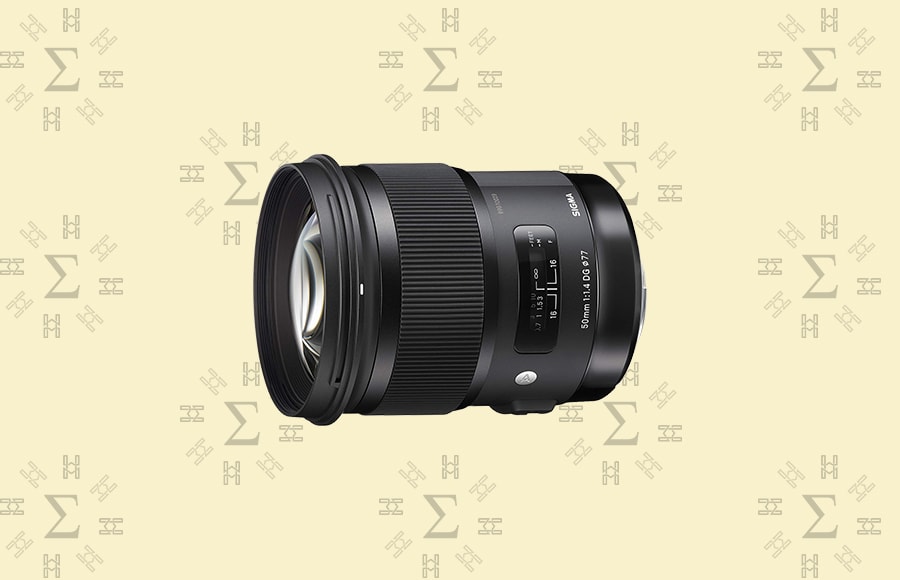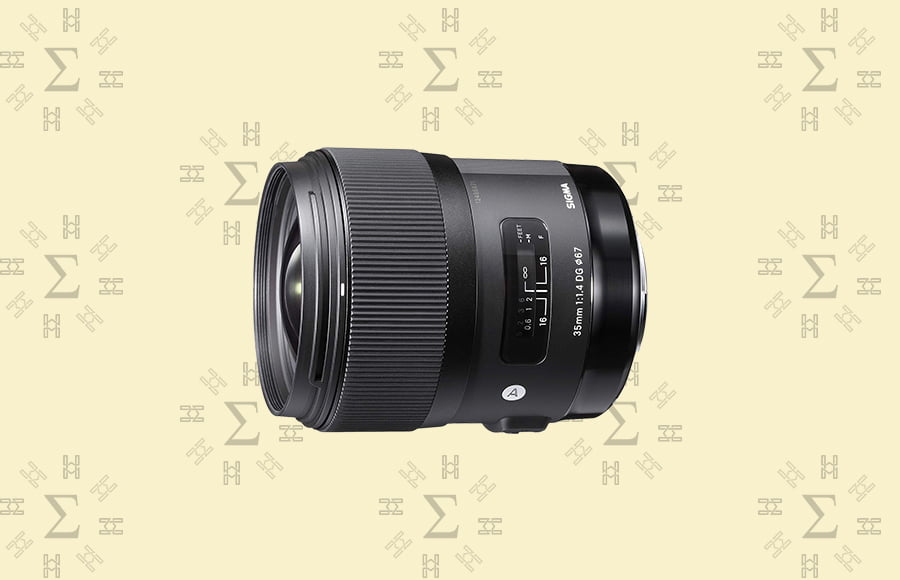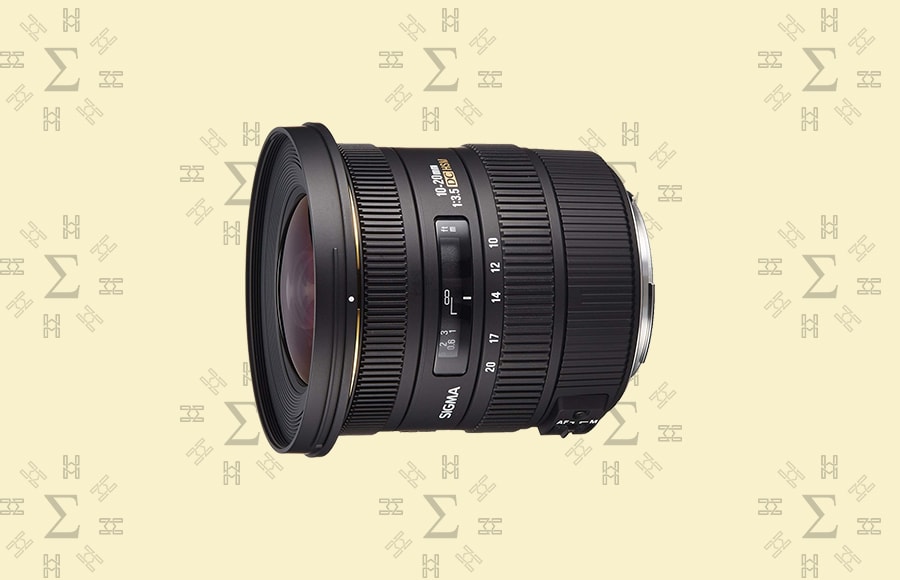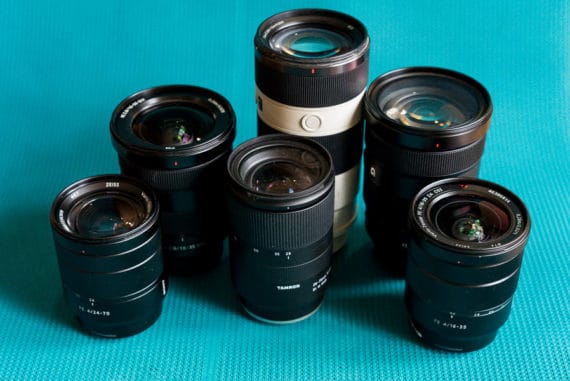
Best Sigma Art Lenses
Check out this guide to the 5 best Sigma lenses, compatible with Canon, Nikon, Sony and more. Incredible quality for affordable prices.
For years Sigma has been one of the best third-party lens developers for photographers on a budget. Now, though, Sigma is stepping into the big leagues with its pro-level Art series.
From zoom lenses to primes, Sigma’s really upped its game in the last few years, and there are now more options than ever.

Versatile lens with exceptional optical performance, sharp autofocus and beautiful bokeh, all within a rugged metal build
That’s why we’ve put together this best Sigma lens guide. It’s short and sweet, but each lens on this list has really proven itself to be a high performer at a great price.
No matter whether you shoot with Canon, Nikon, Sony, Pentax, or Leica, there’s likely a great Sigma lens out there for you.
Let’s take a look.
Table of Contents
Best Sigma Lenses in 2023
| Image | Product | Features | |
|---|---|---|---|
 | Sigma 24-70mm f/2.8OUR #1 CHOICE |
| View Price → |
 | Sigma 18-35mm f/1.8 GREAT VALUE |
| View Price → |
 | Sigma 50mm f/1.4 BEST FOR STREET PHOTOGRAPHY |
| View Price → |
 | Sigma 35mm f/1.4 BEST FOR PROS |
| View Price → |
 | Sigma 10-20mm f/3.5 MOST AFFORDABLE |
| View Price → |
*Buttons link to the Canon version of each lens – see reviews below for links to other brands.
1. Sigma 24-70mm f/2.8 DG HSM Art
Check the latest prices for: Canon | Nikon | Sony
The all-round best Sigma midrange zoom lens. A true workhorse.
If you’re looking for a close-in zoom lens that has pro-quality but is far more affordable than its competitors, you’ll want to check out the Sigma 24-70mm f/2.8 DG Art lens.
The Sigma 24-70mm f/2.8 hits that sweet spot of focal range, being wide enough for landscape and interior shots, yet narrow enough to get in some high-quality portraits.
The constant maximum aperture of f/2.8 and image stabilization allows you to work handheld in lower light. At the telephoto end of the focal range, the high brightness makes for some excellent background blur.
Inside, the Sigma 24-70mm f/2.8 has three SLD elements and four aspherical elements. These reduce distortion and color fringing, as well as help to limit spherical and chromatic aberrations.
Sigma also applied a super multi-layer coating to suppress lens flare and ghosting. There’s also an additional protective coating on the front element.
As with all the Sigma Art lenses, the construction of the 24-70mm f/2.8 is pro level. It has weather sealing, nearly all-metal construction, and where it’s not metal it’s built from a thermally-stable composite material, which lets you shoot in a wide variety of temperatures.
Many pros rely on their 24-70mm for a huge part of their workflow and often avoid third-party lenses thinking they won’t hold up. The build quality of this Sigma lens, though, is definitely built to take the demands of a professional workflow, especially in terms of usability and durability.
Like the other Art lenses, the Sigma 24-70mm f/2.8 also includes Sigma’s trademark hyper sonic motor (HSM). This makes the autofocus nearly silent. It also has a full-time manual override.
The autofocus is generally quick and accurate and can be dialled in even more perfectly when fine-tuned with Sigma’s USB dock.
The overall autofocus performance will depend on what camera body you’re using – but in general, the Sigma 24-70mm f/2.8 responds as quickly as any first-party lens.
The image quality holds its own, especially for its price point. Colors come out bright and nicely contrasty. The bokeh is particularly nice, especially considering this is an f/2.8 lens.
Overall, the sharpness is what you’d expect from a pro-level zoom lens. (Obviously, it won’t match what a prime lens can do.) The sharpness in the center is consistent throughout its zoom range, even wide open at its maximum aperture of f/2.8.
If you’re someone who focuses on the center and then recomposes, you might end up with slightly soft corners while wide open (due to field curvature). If you focus on the corners, however, the problem goes away.
There’s very little distortion, and what does exist, can be quite easily managed in post. In fact, you won’t see any if you shoot in RAW and use lens correction in your software. It’ll be more noticeable if you shoot in JPGs.

Sample Image | © Wayne Simpson
One weakness with this lens is that the vignetting can get pretty noticeable when the lens is wide open. It’s easily fixed in post, but it’s definitely there.
Another main con with this lens is the size and weight. The focal range, high brightness, and solid construction make this lens necessarily a bit large and heavy.
Still, it’s a bit smaller and lighter than the Sony FE 24-70mm f/2.8 G Master and the Panasonic LUMIX S Pro 24-70mm f/2.8, its primary mirrorless competition. It’s also almost half the price of both of these lenses.
The Tamron 28-75mm f/2.8 FE is a lot smaller than the Sigma 24-70mm f/2.8, but there you lose the ability to open up to 24mm. That might not seem like much, but it can make a huge difference when shooting landscapes or other subjects that require a wider angle.
The Sigma 24-70mm f/2.8 comes in both DSLR and Mirrorless versions, with the mirrorless version having very little direct competition in the same price range.
For Canon EF, the Canon EF 24-70mm f/2.8L II USM is lighter, but a third of the price more. I haven’t tried the Canon, but from all accounts, the Sigma 24-70mm is close if not equal in quality. Just a bit heavier (and less expensive).
The Nikon AF-S FX NIKKOR 24-70mm f/2.8E ED VR is both heavier and considerably more expensive.
The takeaway? The Sigma 24-70mm f/2.8 Art lens is an excellent performer at its price point and a very reasonable alternative to the more expensive first-party options. Great for both professionals and advanced amateurs.
2. Sigma 18-35mm f/1.8 DC HSM Art
Check the latest prices for: Canon | Nikon | Sony
The best Sigma wide angle zoom for APS-C cameras.
If you shoot with an APS-C camera and are looking for a quality wide angle at a reasonable price, the Sigma 18-35mm f/1.8 DC HSM Art lens is one of the best third-party options available.
Not only was it the first-ever f/1.8 zoom lens to hit the market, it’s surprisingly sharp for a zoom lens, let alone a wide-angle lens. It basically covers the focal length of three prime lenses and maintains sharpness throughout.
Let’s start with the build:
Like the rest of Sigma’s Art series, this lens has a hypersonic motor (HSM) that makes the autofocus virtually silent. It also has an integrated focus motor that allows it to work on older cameras. If you need it, there’s also a full-time manual override as well.
The lens itself is comprised of 17 elements arranged in 12 groups – five low-dispersion and four aspherical elements. There are also 9 rounded diaphragm blades, which really make for some excellent background blur when shooting at a shallow depth of field.
The glass is a Special Low Dispersion (SLD) type that helps to reduce distortion, even at the widest angle.
Like the Sigma 24-70mm f/2.8 Art lens, the Sigma 18-35mm f/1.8 DC HSM is partially made from thermally stable composite. This doesn’t feel as solid as an all-metal barrel, but is very robust and allows the lens to function in a wider variety of temperatures.
There’s also a metal mount for a solid connection. Unfortunately, there’s no full weatherproofing.
Functionally, both the zoom and focus ring are buttery smooth, and the overall build feels solid and durable.
Obviously, the wide f/1.8 maximum aperture is awesome for shooting in low light and for making incredible bokeh. There’s no image stabilization, but that’s made up for a bit by the fast aperture (or your camera if you’re shooting with a Sony).
As for overall sharpness, this lens is just amazing. Unlike most zoom lenses, which hit their peak at f/4, the Sigma 18-35mm f/1.8 DC HSM Art lens hits its zenith at f/2.8. Wow.
The same is true at 24mm, and it’s not until 35mm that a touch of softness in the center can be detected. An excellent performer for crop sensor cameras!
It’s honestly too bad that heavy vignetting makes it unfit for full-frame bodies.
The only real issue with this lens is that some find its autofocus unreliable when shooting wide open. You can fix that by getting a Sigma USB dock that corresponds to your camera mount, but that’s an extra (though worthwhile) purchase.
If you haven’t worked with one before, the Sigma USB dock allows you to customize, update, and calibrate your lens. It’s especially helpful in this case because you can adjust the autofocus to the needs of your specific camera body. That’s actually really helpful when dealing with a third-party lens.
The USB dock is an extra US$60 investment (give or take), but given that you can now get this lens for under US$600 it’s still quite a bargain. If you use other Sigma lenses, the dock will also work with most of them.
The bottom line: the Sigma 18-35mm f/1.8 DC HSM Art lens is awesome for anyone using a DX or APS-C camera who shoots landscape photography, real estate photography, astrophotography, or anything else that can benefit from a wide angle.
The sharpness is amazing (great for real estate photography), the f/1.8 aperture a delight to work with, and the build quality quite impressive.
Definitely one of the best Sigma zoom lenses out there.
3. Sigma 50mm f/1.4 DG HSM Art
Check the latest prices for: Canon | Nikon | Sony
The best performing “nifty fifty” for the price.
The 50mm prime lens is the quintessential “mama bear” prime lens – not too wide and not too narrow. It’s one of the most common must-haves in a photographer’s kit.
As such, there are a number of first-party and third-party lens options out there, yet the Sigma 50mm f/1.4 DG HSM Art lens really shines as the best value for the money.
It outperforms the Canon 50mm f/1.2L, yet costs half the price. The Nikkor 50mm f/1.4G is more comparable in price, but the Sigma 50mm f/1.4 DG HSM Art lens outperforms it as well – especially at wider apertures.
Is it as good as the Zeiss Otus? Well no, but it’s close and costs just a quarter of the price. Also, the Otus is manual focus only, which doesn’t work for many.
The build quality, as with all the Sigma Art lenses, is excellent both inside and outside.
Inside there are 13 elements in 8 groups. These elements help to minimize coma flare and chromatic aberrations. The lens’ large diameter and floating system also help to correct for vignetting. The glass is Special Low Dispersion (SLD) and has Sigma’s trademark Super Multi-Layer Coating on the external element.
Sigma also employs a floating system that helps you get closer to your subjects. It’s not quite a macro lens, but the Sigma 50mm f/1.4 has a respectable minimum focusing distance of 40cm, and that makes for some great close distance shots.
Like many of the other Sigma lenses in this list, the body of the Sigma 50mm f/1.4 is made of a Thermally Stable Composite (TSC) material which allows it to operate in wider temperature variations than straight metal or plastic.
One thing you’ll notice with this lens is the size. Sigma designed it to have a large lens diameter in order to maximize sharpness and reduce vignetting. While this greatly improves image quality, it has the added effect of making this lens considerably larger and heavier than other comparable 50mm lenses.
On a full-frame DSLR, the size and weight feels well-balanced, but if you’re looking for something super light, this isn’t the lens for you. That being said, the Zeiss Otus 55mm f/1.4 is considerably larger and heavier, so it all depends on what you’re looking for.

Sample Image | © Matthew Saville
Regarding image quality, images taken with the Sigma 50mm f/1.4 lens have excellent sharpness, contrast, and color transmission. There’s also no discernible distortion. In fact, the image quality easily beats out the Nikon 58mm f/1.4G and Canon 50mm f/1.2L. That’s quite a feat for a third-party lens!
As far as sharpness is concerned, some say that you won’t find any 50mm with autofocus that beats out this lens.
The autofocus works well generally, though some users have reported some hunting here and there. If that’s the case, fine-tuning the lens on Sigma’s USB dock will solve the problem. You can also send the lens in to have Sigma adjust it for free if you find the focus lagging, but the USB dock is actually a great investment, especially if you have more than one Sigma lens.
As is typical of these types of prime lenses, there’s no optical stabilization. This won’t bother Sony Alpha shooters but might reduce some handheld options for others. Still, with the f/1.4 aperture on this lens, you’ll have plenty of low-light leeway. There’s also no weather sealing.
One thing of note with this lens is that it can handle the higher resolution cameras (not all glass can). It works just as well on the Canon EOS 5DS R (50 MP) as the Canon EOS 6D (20MP). That means you’ll be able to use this lens far into the future since high-resolution cameras are quickly becoming the standard.
The main cons with this lens are the weight, the lack of weather sealing and the potential need to invest in the USB dock to fine-tune the autofocus to your camera. (But again, the dock is a great investment and will tune just about all modern Sigma lenses.)
At around US$950, the price is a bit high for a standard 50mm but seriously makes up for it in image quality.
The Sigma 50mm f/1.4 DG HSM Art lens is available for Canon EF, Nikon F, Sony Alpha series, Sony E series, Leica/Panasonic/Sigma L, and Sigma SA cameras.
The takeaway? The Sigma 50mm f/1.4 Art is one of the sharpest 50mm primes out there and outperforms everything but the Zeiss Otus 55mm f/1.4 (which retails for a whopping US$4000). If you’re into high-quality primes, this is definitely one of the best sigma lenses to have in your kit.
4. Sigma 35mm f/1.4 DG HSM Art
Check the latest prices for: Canon | Nikon | Sony
The best all-round Sigma prime lens
The 35mm is a staple in the world of photography and Sigma truly knocked it out of the park with the Sigma 35mm f/1.4 DG HSM Art lens.
It has all the technology of the other Sigma Art lenses: a Hyper Sonic Motor, a floating internal focusing system, and SLD/FLD Glass elements, but that’s not what will make you love this lens.
The optics are simply out of this world.
There’s practically no distortion, next to no chromatic aberration, and the color rendition is so superb it seriously rivals many far more exotic lenses.
And the sharpness… the sharpness is truly extraordinary. It’s crazy sharp. Center performance at the maximum aperture of f/1.4 is far higher than many other lenses stopped down to f/8!
Most prime lenses aren’t at their sharpest at their widest aperture. Not so with the Sigma 35mm f/1.4. Set the aperture to f/1.4 and shoot away. You’ll only need to stop it down for more depth of field, not for sharpness.
In fact, the Sigma 35mm f/1.4 DG HSM Art lens easily matches and even beats the Canon 35mm f/1.4 for sharpness across the whole frame, no matter where you are in the aperture range. Considering the Sigma 35mm f/1.4 is fully half the price of both the Canon and even the Nikon 35mm f/1.4G, it’s simply incredible.
Sure, it’s big and heavy for a prime lens, but that’s part of the price you pay for such superb optics. Truth be told, the Sony FE 35mm f/1.4 ZA is pretty much the same size and is only a tad lighter.

Sample Image | © Kazuyuki Hagiwara
Like any lens, the Sigma 35mm f/1.4 does have a couple of issues. The weight is one, of course. There’s also no weather sealing and the fact that it gives onion-shaped bokeh that might not appeal to everyone. Still, these are hardly deal-breakers when you consider what this lens delivers.
Also, there’s no image stabilization, but few prime lenses of this type have that. (Again, Sony users will have the advantage here.)
Like the other Sigma lenses on this list, you may have to adjust the autofocus using the Sigma USB hub, but even with the extra US$60, this lens is a steal.
Really, you’ll be amazed at the images that come out of this lens.
If you’re a lover of 35mm primes, this lens is worth serious look. It may just be one of the best lenses Sigma has ever made. It’s definitely the best 35mm prime lens anywhere near this price point or even for double.
5. Sigma 10-20mm f/3.5 EX DC HSM
Check the latest prices for: Canon | Nikon | Sony
The best Sigma ultra-wide zoom lens.
The Sigma 10-20mm f/3.5 EX DC HSM has been around for a few years, but its solid performance combined with its excellent price tag keep it high on the “Best Sigma Lenses” list for APS-C shooters.
The 10-20mm zoom range is especially nice for landscape photography and astrophotography, and many real estate photographers never take this focal range off their camera.
With a constant maximum aperture of f/3.5, the Sigma 10-20mm f/3.5 EX DC HSM is fairly fast for a wide-angle zoom. It’s a bit larger than its slower cousin, the popular 10-20mm f/4-5.6 EX DC HSM, but the faster aperture makes it well worth it, especially when doing astro or real estate photography.
While a bit older than the other lenses on this list, the Sigma 10-20mm f/3.5 EX DC HSM still has some pretty sophisticated optics.
Two Super-Low Dispersion glass elements and two Extraordinary-Low Dispersion elements keep chromatic aberrations and barrel distortion to a minimum. Together they produce clean, sharp images with pleasing colors and nice contrast.
The build quality of this lens is nice, with some extra features that make it quite enjoyable to work with. The zoom and focus rings on both sides of the focus distance scale are definitely a nice touch.
The autofocus is nice and snappy, though not as quiet as the newer Sigma lenses with a hypersonic motor in them. Still, it’s fast and accurate. (This particular lens is not compatible with the Sigma USB dock.)
Center sharpness with the Sigma 10-20mm f/3.5 EX DC HSM is good throughout its zoom range, from telephoto to wide open.
Corner sharpness, though, isn’t quite as great. Comparable lenses from Canon and Nikon do a bit better. If you want sharper corners on this lens, you’ll probably need to stop down to f/8 or f/11.
There’s also no image stabilization. That’ll be a slight bummer for those shooting handheld, but if you’re a tripod or Sony shooter, this won’t be much of an issue.
Like the other Sigma lenses on this list, the Sigma 10-20mm f/3.5 EX DC HSM is a bit hefty. The front element is downright large and wears an 82mm filter. If you’re ok with the weight and size, though, this is definitely a fantastic buy.
In fact, the real clincher for this lens is its price. At the time this article was written, you can buy the Sigma 10-20mm f/3.5 EX DC HSM for less than US$330. That’s a steal! Perfect for DX shooters on a budget.
FAQ’S
Does the Sigma lens fit Nikon?
Yes, most Sigma lenses will fit a Nikon camera, but it depends on the type of lens and camera model you’re using.
Does the autofocus on Sony A7S work with Sigma lenses?
Generally, the autofocus on Song A7S should work with your Sigma lenses as long as they’re both compatible.
Final Words
Sigma lenses have always been a great option for those wanting to save a bit of money on their gear, but the Art series has really proved itself to be a contender in the world of pro lenses.
The build quality, exceptional optics, and fantastic performance of each Sigma Art lens combined with their more than reasonable price tags make them seriously worth a look.
There are a few other perks to buying Sigma lenses (beyond big price savings).
The first is the fact that the optional Sigma USB dock is actually quite amazing and gives you an unprecedented amount of control over the workings of your lens.
The second is that you can have Sigma switch your lens mount if you ever change camera systems. That’s pretty awesome, especially for those DSLR users thinking of switching to mirrorless.
So if you’re looking for a great, high-performing lens at a fraction of the price, you can’t really go wrong with a Sigma lens. While we didn’t include a telephoto zoom lens or macro lens in the list above, we really think these lenses are the best Sigma lenses in 2023.

Versatile lens with exceptional optical performance, sharp autofocus and beautiful bokeh, all within a rugged metal build


















